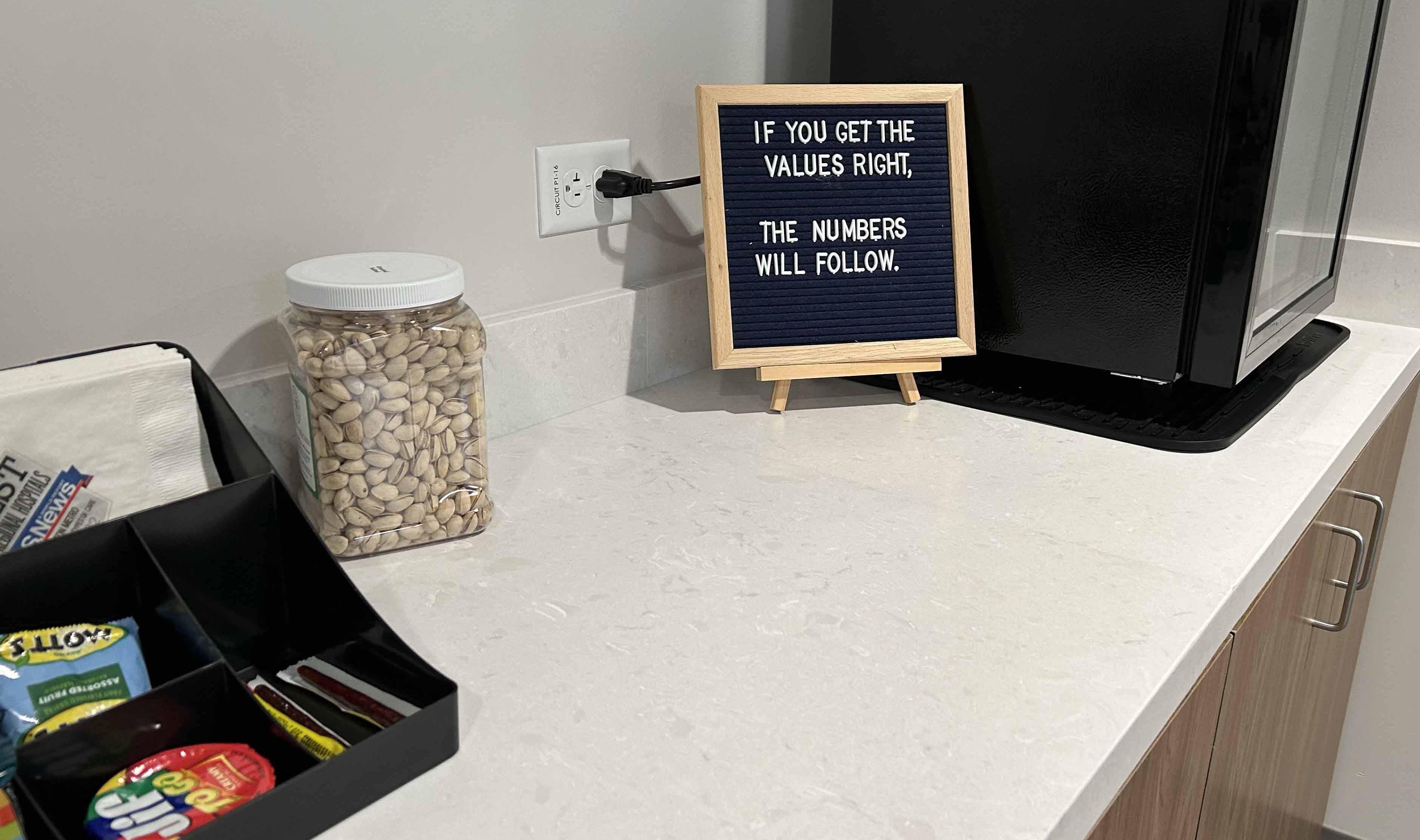
|
Where the Mission Meets the Margin
A Field Study of Organizational Communication at Houston Methodist Hospital |
     
|
|

|
Where the Mission Meets the Margin
A Field Study of Organizational Communication at Houston Methodist Hospital |
     
|
|
 |
Lauren Wise is originally from Fort Worth, Texas, and is pursuing a B.A in Communications and Theatre with a minor in Design. She is 21 years old and an upcoming senior at Southwestern University. For her last semester in undergraduate school, she plans on spending her time doing the New York Arts Internship Program. After the New York Arts Program, she plans to continue her education by attending graduate school at Tarleton University for Communications. During her time at Southwestern she has worked various jobs including an internship with Southwesterns Marketing Department, as well as being assistant to the head of the theatre department. She currently works at the Georgetown Palace's educational program as a stage manager. |
For this project, I will be discussing experiences during our week-long fieldwork at the Houston Methodist Hospital system. During this trip, my classmates and I had the opportunity to observe how the Houston Methodist Willowbrook (HMWB) and Houston Methodist Hospital Flagship location (HMH) are structured in terms of organizational communication. Throughout these observation processes, we were able to meet and speak to over 40 employees, ranging anywhere from marketing, legal teams, spiritual life workers, facilities workers, and many more. All the information following in the paper is an overview and analysis of the week spent observing, specifically from the viewpoint of someone who may not be familiar with commonalities among hospitals or medical centers. This being said, this paper will consist of my own observations as well as comments or conversations had with various staff and employees.Although we spoke to a diverse range of employees within the system, I found it interesting that practices such as the arts were mentioned relatively frequently. In my past experiences with hospitals, I never would have considered the arts to be an important part of how a hospital was organized apart from the standard non-specific art pieces that you often see floating around, or occasionally a pianist playing in the entry lobby. However, the arts were something that was found quite often throughout our stay at both HMWB and HMH. The way that Houston Methodist organizes their relationship to the arts as both non-clinical and clinical practices is structured to benefit just about everyone who encounters the hospital, while being a wonderful strategic way to benefit employees, patients, the community, doctors, and the creators of art themselves.
The use of the arts implemented throughout the Houston Methodist Hospital system acts to first establish and introduce their brand/values through various religious artworks and passive art (art experienced as incidental to a space instead of the focus of that space, as it would be in a museum or gallery). Secondly, it strengthens their internal relations by actively showing their brand/values through programs such as the NICU Music therapy program while also offering artistic opportunities to employees and local artists and musicians. Finally, they use it as an opportunity to grow their brand through external arts partnerships that simultaneously clinically supports the arts while all together cementing and reinforcing their brand as whole, providing a visual/material demonstration of their mission.

Figure 1: "Jesus, the Great Physician" sculpture, HMH lobby. Photograph by Bob Bednar
Artwork in Introducing Brand/Values
When first walking into the main entrance of Houston Methodist Willowbrook, I couldn't help but notice a life-sized statue picturing Jesus healing a kneeling figure by touching them on their forehead. This statue immediately catches the eye being put in the center of the entry pavilion and is complemented by other various religious artworks such as mosaics, framed quilts, and paintings. The sculpture, titled "Jesus, The Great Physician," provides visitors with a visual metaphor that represents HM's status as a religiously affiliated hospital.
To my surprise, when our group took a visit to the flagship location (HMH), we saw that same statue sitting in the main entry pavilion as seen in Figure 1. We met with VP of Spiritual Life and Values Integration, Charles Millikan, who discussed the statue with me. I learned that they currently have this statue at all 8 hospital locations and serves as a symbol for what they strive for within their hospital system.
Within the flagship location there is also a large mosaic as seen in Figure 2, which is replicated in smaller scale throughout all 8 locations. The mid-century modern style mosaic pictures Jesus in the center in front of a cross, surrounded by both scientific and biblical imagery from different moments of the past. Like the "Jesus, The Great Physician" sculpture, the mosaic visual asserts continuity between historical Jesus and contemporary physicians and nurses as healers. Placed here, at the site of the Research Institute and the Medical School, it also draws scientific researchers into the visual narrative.
Figure 2: Mosaic, HMH lobby. Photograph by Bob Bednar
Charles Millikan described how the mosaic is an iconic visualization of the Houston Methodist mission, working to bridge two ideologies that are often separate in the culture, Science and Religion, the same way that HM as a whole seeks to balance its mission and its margin.
This larger-than-life mosaic takes place in a lounge outside of one of the hubs for their spiritual services. The mosaic used to be a prominent feature of the front exterior of the flagship hospital, serving as a kind of billboard for Houston Methodist. A few years ago, it was moved from the outside where it was being blocked by greenery, to an inside area also with heavy foot traffic. Charles Millikan expressed the hard work and detail that went into dismantling, moving, and rebuilding the mosaic, reflecting just how important it is to the HM System.
Not only are there intentions within this system to create art that goes alongside their message, but they also act intentionally to preserve these values. These two art pieces introduce and establish the hospital's values and branding to those who may be first time visitors like me, or generally ignorant of what Houston Methodist stands for. These art pieces overall introduce patrons to two main practices that are established within this hospital, religion within the Christian faith, and healing.
The Arts in Actively proving Values/Brand
Branding and values do nothing for organizational communication if the organization itself does not uphold them. In the case of HM, from every person we talked to it seemed that as a whole one of the benefits of this mission-driven system is that they uphold their values, just one example being "Patients first" used as a term consistently throughout the system.
The hospital offers opportunities in actively proving their helpful, supportive, and healing focused brand through the arts. Clinically, they have a program within the NICU or "Neonatal intensive care unit" section of the hospital that offers music therapy. HM researchers are also conducting research surrounding Dementia and Alzheimer's patients with a positive cognitive reaction to songs that said patients enjoy. These uses of music therapy are one of the few cases that I have seen the arts and healing implemented within western medicine.
Apart from using the arts to support patients medically, the arts are used to support employees by offering occasional worker-featured pop-up galleries throughout the hospital, as well as concerts for employees that are musically inclined.
Figure 3: Painting of HMWB staff during Pandemic. Photograph by Bob Bednar
Additionally, almost every time we were at the hospital locations, there was at least one musical artist playing in the lobby. According to an employee that gave us a tour around the HMWB, they often have music playing sourced from local artists, as well as accepting artwork to be hung around the hospital that has either been produced by HM employees or has been donated to the hospital because it depicts actual employees, such as the painting seen in Figure 3, which depicts physicians and nurses decked out in Personal Protective Equipment (PPE) in the early stages of the COVID-19 pandemic.
This encouragement of employee creativity and hiring and supporting local artists and musicians also cements their values throughout the community. The use of the arts both clinically and non-clinically in this case takes a step above the previous introduction of values/brand, to showcase and act upon their previous implications, overall solidifying their intended branding and values.
The Arts as a Tool for Brand Growth
Not only does the Houston Methodist Hospital system use the arts as a form of implementing and cementing their values and brand, but they also emphasize the arts as an important form of external communications through marketing. During our trip to marketing headquarters downtown, we learned that an important part of the hospital's functions relies on external sponsor partnerships. Houston Methodist puts a heavy emphasis on their Sports medicine and orthopedic departments, so it was no surprise to see local sports teams such as the Astros and Texans and the Houston Texans on their lists of partnerships.
However, they also had partnerships with the Houston Opera and Ballet, as well as showcasing various advertisements featuring the arts (specifically ballet) in regard to their orthopedic program. The heads of the marketing department also explained that with these strategic partnerships with groups such as the Houston Ballet, different physicians have the chance to work with clients at these spaces, which inherently builds their clientele for specialty practices through their direct work with the Ballet. This not only benefits the artists that often are prone to work-related injuries and benefits the already working physicians but also grows the overall brand outreach of the overall hospital system, as these partnerships are amplified in the venues where they occur in the forms of sponsorship logos, etc.
Conclusions
From my fieldwork at the Houston Methodist Hospital System, I learned that this system uses the arts as a tool for the larger scope of their organizational communications, and branding. By first starting off with the introduction of their values and brand through artwork, it inherently carves a spot for themselves to prove their values and branding through their practices with patients such as their NICU Programs, as well as supporting their employees and community artists. However, this is not limited to their internal relations with their heavy marketing emphasis on partnerships with the Houston Ballet and Opera. Overall, Houston Methodist uses the arts as an organizational communication tool as a way to introduce, prove, and grow their brand through their set values.
     
|
|
Design © 2024 by Bob Bednar and Alexa Delenela
Contact: |